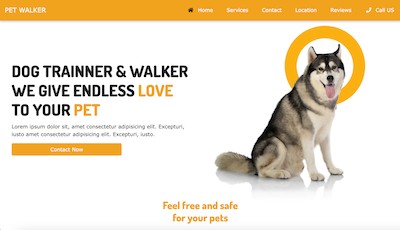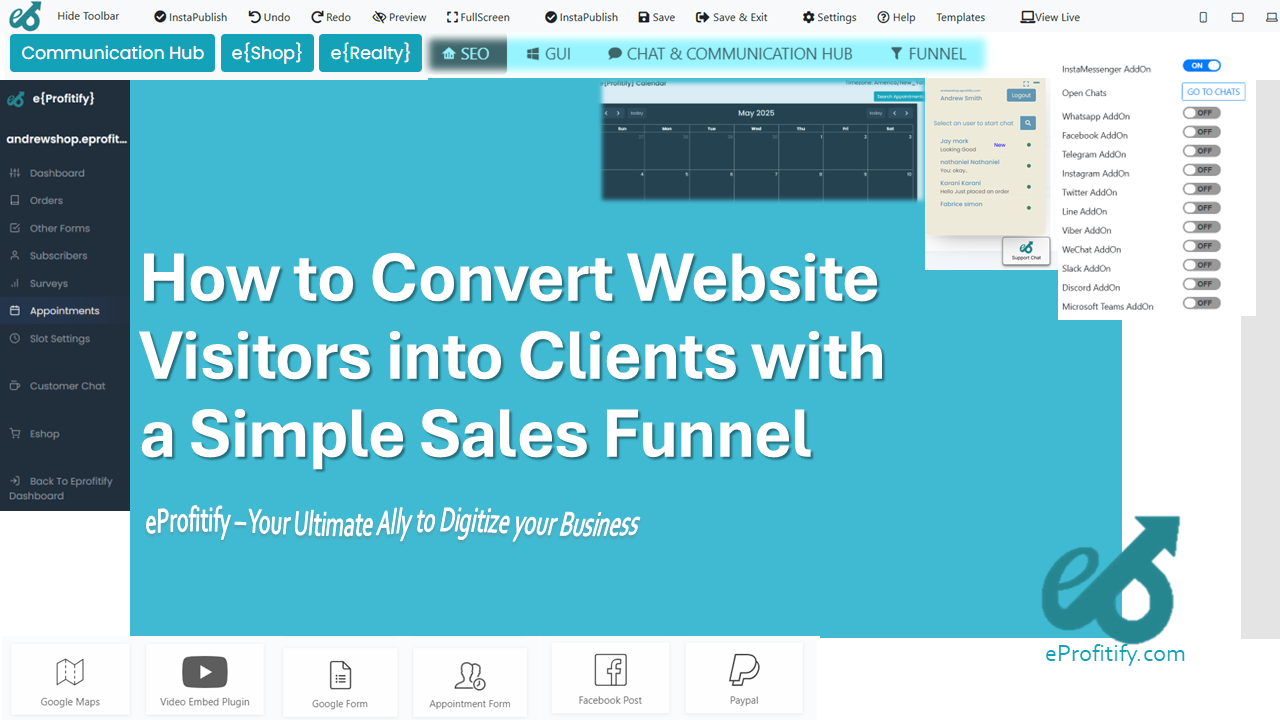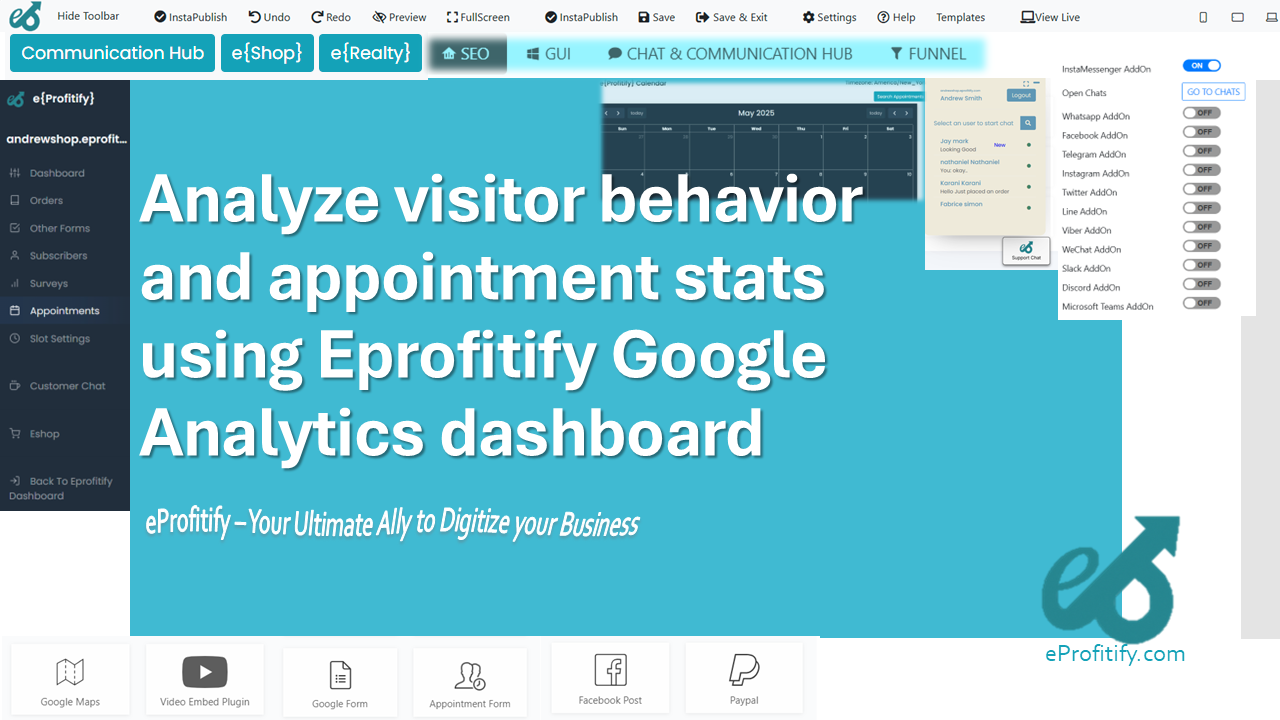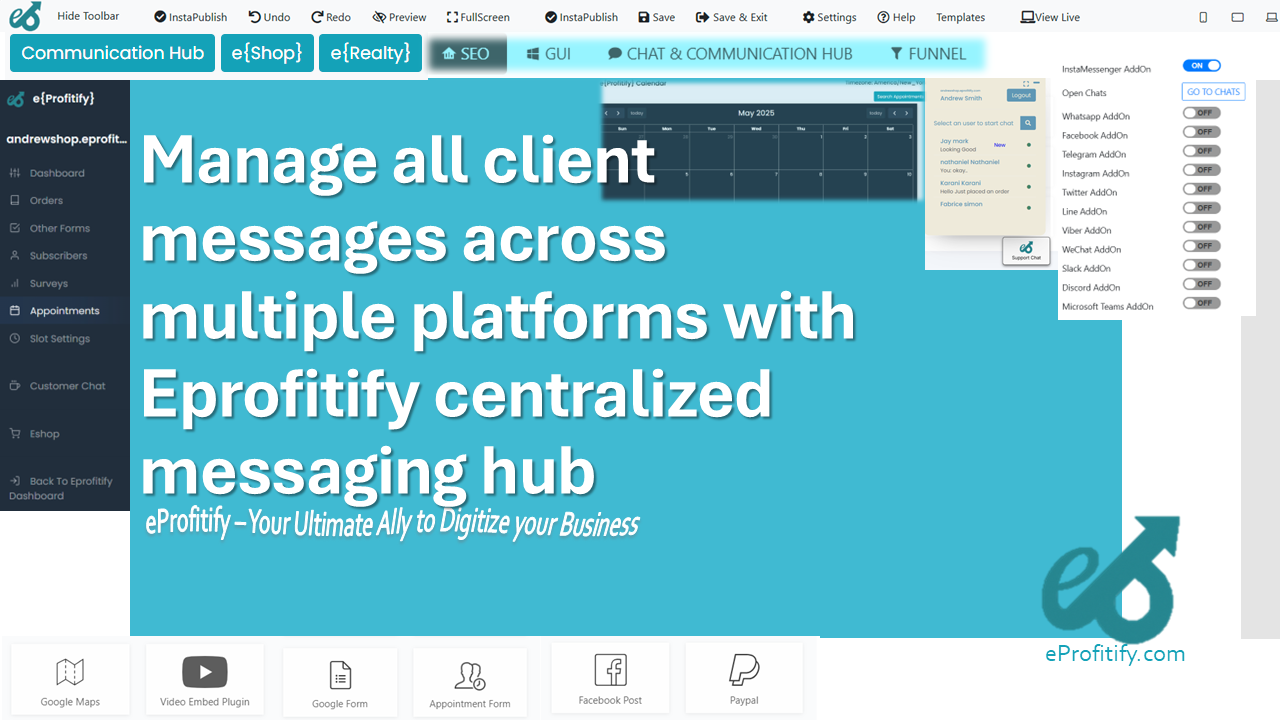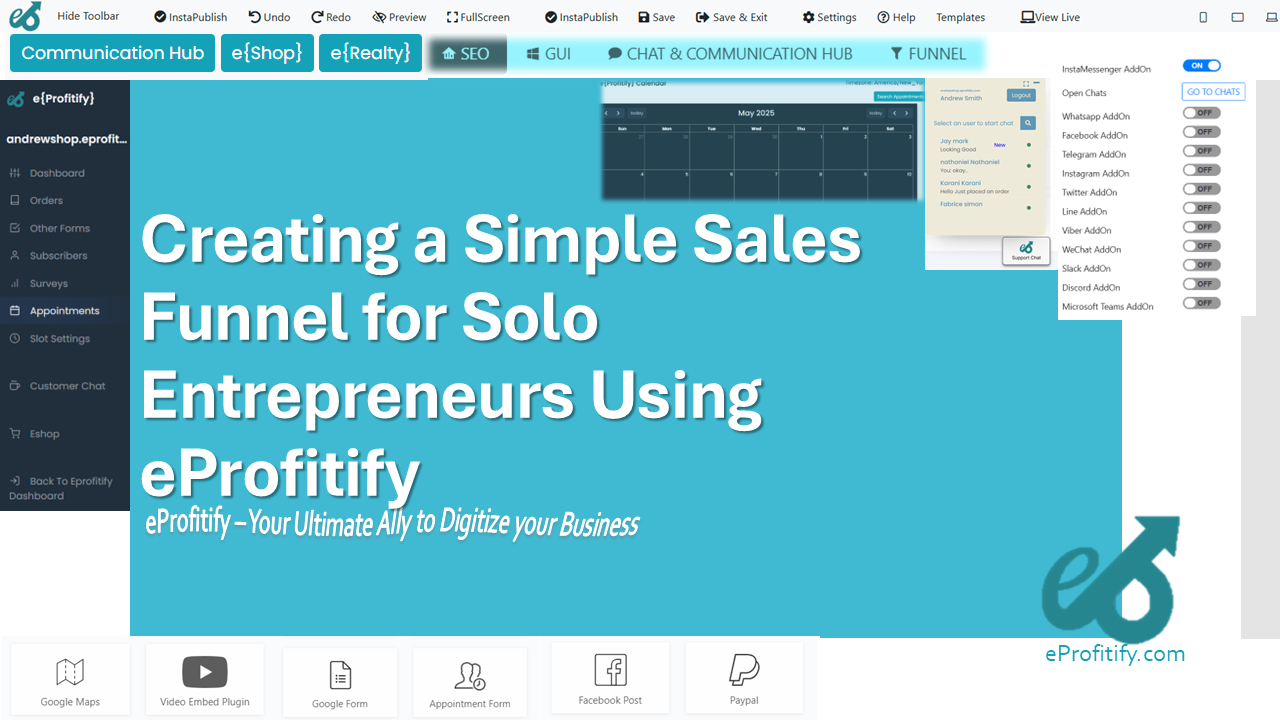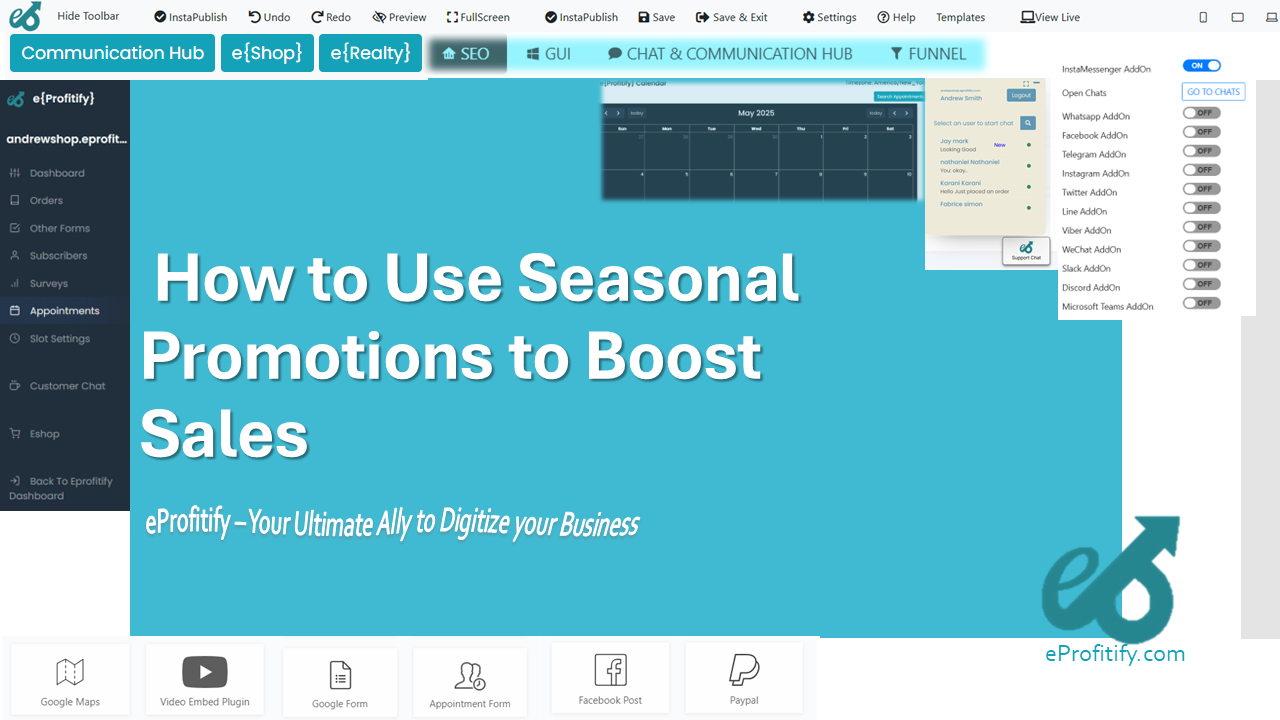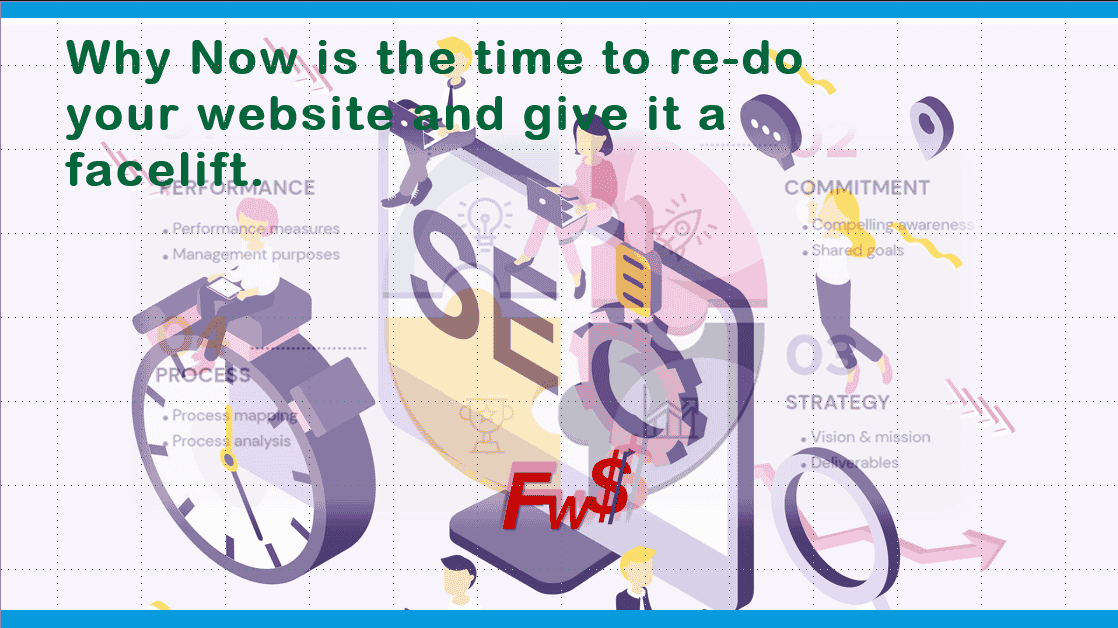How to Perform a Comprehensive SEO Audit Checklist
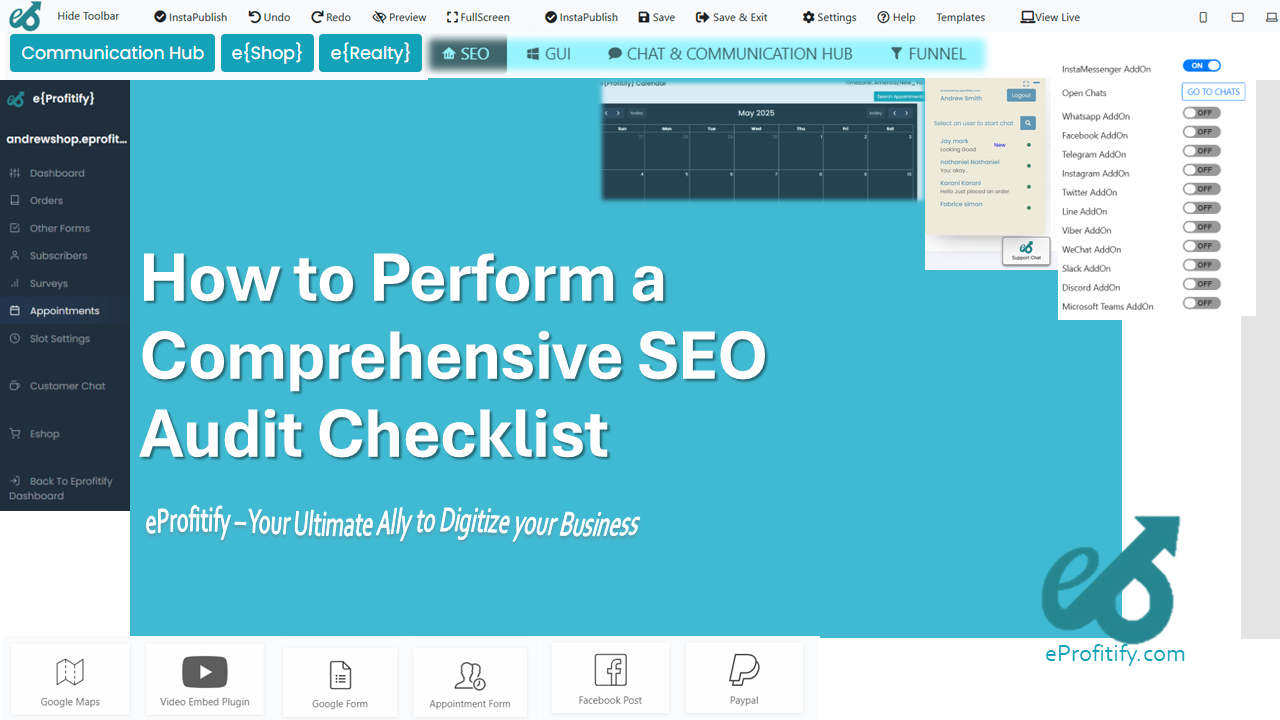
Schedule a LIVE Zoom call with an eProfitify Expert.
How to Perform a Comprehensive SEO Audit Checklist
Search Engine Optimization (SEO) audits are critical for identifying technical, on-page, and off-page issues that hinder a website’s visibility and ranking. With 68% of online experiences starting with a search engine (BrightEdge), ensuring your website adheres to SEO best practices is non-negotiable. This guide outlines a step-by-step SEO audit checklist, supported by statistics, and highlights eprofitify—a leading website management platform with features like instant messaging, appointment scheduling, CRM, and ecommerce tools—to streamline the process.
1. Technical SEO Audit
a. Crawlability and Indexing
Use tools like Google Search Console to check for crawl errors, blocked URLs, or incorrect robots.txt directives. As of 2023, 47% of websites have crawl budget inefficiencies, leading to incomplete indexing (SEMrush).
b. Site Speed
Evaluate loading times using tools like PageSpeed Insights. A 1-second delay in page load time reduces conversions by 4.42% (Portent). Platforms like eprofitify integrate built-in performance optimization tools to automatically compress images and minify code, improving site speed.
c. Mobile-Friendliness
Ensure your site is responsive and passes Google’s Mobile-Friendly Test. Mobile devices account for 58.33% of global website traffic (Statista, 2023).
d. SSL Certificate
Check if your site uses HTTPS. Google prioritizes secure sites, with 95% of top-ranking pages using HTTPS (Moz).
e. XML Sitemap and Robots.txt
Verify the existence of an updated XML sitemap and a correctly configured robots.txt file.
2. On-Page SEO Audit
a. Title Tags and Meta Descriptions
Analyze title tags (ideally under 60 characters) and meta descriptions (150–160 characters). Pages with optimized titles receive 45% more clicks (Moz). eprofitify’s CMS allows real-time editing and SEO previews to refine metadata.
b. Header Tags (H1-H6)
Every page should have one unique H1 tag. Use H2-H6 tags to structure content. Pages with proper header hierarchies see 40% higher engagement (Backlinko).
c. Keyword Optimization
Ensure target keywords are naturally integrated into content, URLs, and headers. Avoid keyword stuffing—pages with semantic SEO rank 12% higher (Ahrefs).
d. Internal Linking
Check for relevant internal links pointing to high-priority pages. Sites with robust internal linking structures have 25% lower bounce rates (HubSpot).
3. Content Audit
a. Quality and Relevance
Assess content depth, accuracy, and alignment with user intent. Pages over 2,000 words generate 3x more traffic (Semrush). eprofitify’s AI-driven content analyzer helps identify gaps and improve readability.
b. Duplicate Content
Use tools like Copyscape to detect duplicate content, which can lead to a 30% drop in rankings (HubSpot).
c. Content Freshness
Update outdated content. Refreshing old posts increases organic traffic by 72% (Animalz).
d. Multimedia Optimization
Optimize images (alt tags, file names) and videos (transcripts, schema markup). Pages with videos retain users 88% longer (Wyzowl).
4. User Experience (UX) Audit
a. Navigation and Site Structure
Simplify menus for easy access. Sites with logical structures reduce bounce rates by 34% (Forrester).
b. Mobile UX
Test mobile navigation, button sizes, and readability. Over 50% of users abandon sites with poor mobile design (Google).
c. Accessibility
Ensure compliance with WCAG 2.1 standards. Accessible websites see 50% broader audience reach (WebAIM).
5. Off-Page SEO Audit
a. Backlink Profile
Analyze backlinks for quality and relevance using Ahrefs or Moz. Websites with 100+ backlinks generate 3.6x more traffic (Ahrefs).
b. Domain Authority (DA)
Check your DA score. Sites with DA >50 rank in the top 10 for 45% of keywords (Moz). eprofitify’s CRM integrates outreach tools to streamline link-building campaigns.
c. Social Signals
Monitor social shares and engagement. Content shared 3+ times on social media gains 130% more backlinks (BuzzSumo).
6. Local SEO Audit
a. Google My Business (GMB)
Verify and optimize your GMB profile. 46% of Google searches are local (GoGulf). eprofitify’s appointment management system syncs with GMB to update real-time availability.
b. NAP Consistency
Ensure Name, Address, and Phone number are consistent across directories. Inconsistent NAPs lower local rankings by 32% (BrightLocal).
c. Local Citations
List your business on platforms like Yelp and Yellow Pages.
7. Analytics and Reporting
a. Google Analytics
Track traffic sources, bounce rates, and conversions. Pages with <40% bounce rates rank 2x higher (HubSpot).
b. Conversion Rate Optimization (CRO)
Use heatmaps to analyze user behavior. eprofitify offers integrated analytics and A/B testing to boost CRO by up to 300% (VWO).
8. Ecommerce SEO Audit
a. Product Page Optimization
Optimize titles, descriptions, and images. 87% of shoppers say product content influences purchases (Salsify).
b. Structured Data
Implement schema markup for product pages. Sites using schema rank 36% higher (Search Engine Land).
c. Checkout Experience
Streamline the checkout process. Cart abandonment drops by 26% with one-click checkout (Baymard).
Conclusion
A holistic SEO audit addresses technical, content, and user experience gaps to boost rankings and conversions. Tools like eprofitify simplify this process with features like instant messaging for team collaboration, CRM for lead tracking, and ecommerce integrations. By leveraging data-driven strategies—from mobile optimization to backlink analysis—businesses can achieve sustainable growth in an era where 53% of marketers attribute SEO as their top inbound channel (HubSpot). Regular audits, supported by robust platforms like eprofitify, ensure your website stays agile in the ever-evolving search landscape.

